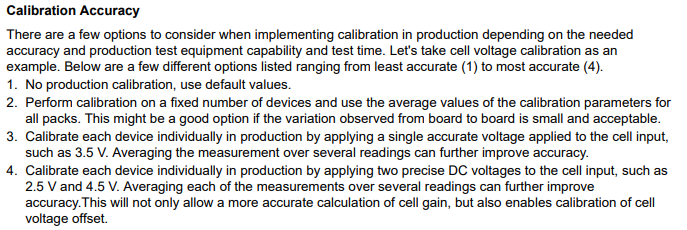Hi Ti expert,
I am facing an issue running the sample calibration code (in python) as mentioned in the " Programmer’s Guide BQ76952, BQ76942 Calibration and OTP Programming Guide " . after executing the script I get an error saying there is no 'bqcomm' module installed. I have searched it online but found no module by the name of bqcomm. how to make this code executable without having this module then? also reagarding my previous query I have some confusion in the steps mentioned. to be able to apply 2.5 V and 4.2V on each cell as mentioned in the guide steps , do I need to apply 40V and 67.2V across the BAT+ and BAT- terminals only ? as the bq76952EVM needs the power to run so how will this work. BAT + and BAT - having a dc supply for eg (12V) and then applying 2.5V per each cell from another supply and each time a press enter in my code (in total16 times for 2.5V and 16 times for 4.2V) ? and then it will print out the cell gains and offset . Am I thinking correctly? All what I have mentioned above is from the smaple code provided at the end of the programmers guide for BQ76942 and BQ76952. As always, thank you for your assistance.
-
Ask a related question
What is a related question?A related question is a question created from another question. When the related question is created, it will be automatically linked to the original question.


